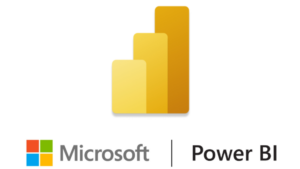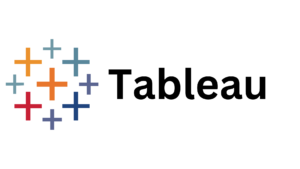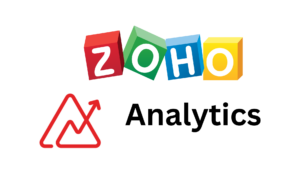Introduction

- In practically every industry, BI is a critical success factor for organisations. There has never been a more important time to be able to draw insightful conclusions from data, and Power BI technologies enable this.
- Businesses are becoming more and more conscious of the need to utilise big data as its prevalence rises. They need to organise and analyse their data well since they have access to so much information. The use of business intelligence technologies has increased in tandem with the ubiquity and complexity of data.
- The sheer number of Powerbi tools that are available can be both liberating and debilitating. In order to assist you in navigating this terrain, this piece highlights and provides an overview of some of the top business intelligence solutions now on the market.
Business Intelligence tool
Let’s take a closer look at Powerbi tools and their significance for businesses of all sizes before moving on to our list of the finest ones.
What are tools for Business Intelligence?
The broad range of software programs, platforms, and solutions known as business intelligence (BI) tools is intended to extract, convert, and present data in order to facilitate data analysis, trend detection, and strategic decision-making in an enterprise. With the help of these technologies, you can turn unstructured data into insightful knowledge that will help you make better decisions, run your business more efficiently, and maintain your competitive edge in the data-driven marketplaces of today.
Even if that seems impressive, you might be curious about how Powerbi tools are able to accomplish all of this. By going over the four fundamental functions of business intelligence tools, we may respond to this:
- Data Integration: BI systems can link to and combine data from a variety of sources, including cloud-based apps, spreadsheets, and databases.
- Data transformation: Data transformation is an essential component of Powerbi tools that helps make data more compatible and easier to use because it may be found in a variety of formats. By organising, combining, and cleansing data, users can transform it.
- Data Visualization: The foundation of business intelligence is data visualization, which is the capacity to visually depict huge, frequently complex datasets to provide insights and highlight patterns and trends.
- Reporting: A BI tool’s ultimate data presentation takes the shape of a report or dashboard that may be automatically forwarded to important stakeholders.
Importance of Business Intelligence Tools
The question of how and why you should care is raised by the crucial role these technologies play in maximising the potential of data and fostering success.
Let’s discuss a few ways that Powerbi tools can help your company:
- Single source of truth: If you’ve ever gotten into a disagreement over whose figures are more accurate, you’ll understand why this is such a big deal. The capacity to combine data from multiple sources produces a single source of truth, enabling a centralised, comprehensive view of the organisation’s operations.
- Trend analysis: Powerbi tools allow you to see patterns and trends in data, which helps you comprehend consumer behavior, market dynamics, and the effects of corporate strategy. These tools visualise both historical and present data.
- Data-driven decision-making: One of the main benefits of business intelligence technologies is the capacity to make decisions based on data. These technologies enable firms to reduce risks, find growth possibilities, and optimize processes without depending solely on intuition by offering actionable information.
- Productivity and efficiency: BI systems minimise manual data processing by utilising automated reporting and data visualisation. Employee productivity is increased by this efficiency, which also frees them up to concentrate on key tasks.
- Problem Solving: BI systems can detect potential issues or organisational bottlenecks, which helps in problem solutions. By identifying problem areas, businesses can take remedial action to improve operations and performance.
Businesses may realize their greatest potential when integrating data science with business intelligence. Analysts can use computer languages like Python, R, or SQL to automatically generate and distribute reports on critical business KPIs.
However, this can be a fairly complex and frequently manual process unless you use a platform like DataLab to effectively and efficiently leverage these programming languages to produce automatic reports that combine data science’s power with business intelligence tools’ visualization capabilities.
Top 6 Power BI Tools
Discover the 6 essential Power BI tools that seamlessly transform data into actionable insights, enabling efficient analysis and creating compelling, dynamic visualizations.
1. Microsoft Power BI
A robust BI tool, Power BI provides a free desktop program in addition to a cloud-based platform for sharing dashboards and reports. Power BI is a feature-rich application that can both transform and visualize data. It also has some amazing AI-based features and predictive modelling capabilities that set it apart as a market leader in business intelligence.
For novices who are accustomed to using Microsoft products, Power BI is especially suitable as it offers a smooth introduction to the world of business intelligence. With DataCamp’s Introduction to Power BI training, you can rapidly get up to speed. Enrolling in the Power BI Fundamentals skill track can help you advance your Power BI knowledge.
There are two ways to pay for Power BI:
Either a Pro subscription that is paid for each user, or a Premium plan that is charged for each person or capacity if you need access to advanced enterprise-scale features.
Important characteristics
- Integrations and data connections for a variety of data sources.
- A drag-and-drop report builder and robust data visualisation features combined with an intuitive UI.
- Natural language inquiry for investigating data.
- Web-based nature: Power BI reports are easily shared with others by publishing them online. Furthermore, Power BI Service on the web allows for the direct design of reports along with direct application interaction.
Additionally, Power BI can interact with Python, allowing you to include data science capabilities right into your Power BI reports. Check out DataCamp’s Introduction to python in Power BI course.
2. Tableau

Another popular business intelligence application that prioritises usability, especially for non-technical users, is Tableau. With its pre-built data connectors and sophisticated data discovery and visualisation features, Tableau can be seamlessly integrated with dozens of applications.
One distinctive feature of Tableau, though, is its Tableau Public offering, which is open to everyone to use for free to learn more about Tableau and advance their BI and analytical abilities—from total novices to seasoned professionals. A fantastic starting point for learning Tableau is the Introduction to Tableau course offered by DataCamp. The Tableau Fundamentals skill track is a great place to start if you’d want a more thorough introduction to Tableau.
Tableau is a cost-effective choice, even for small teams, thanks to its three-tiered subscription-based pricing model.
Important characteristics
- Many data connections available for practically all types of data sources.
- Users can create and automate interactive, dynamic dashboards or quickly create ad hoc assessments of their data.
- Live data visualisation and analysis made possible by real-time data integration.
3. Looker Studio
Looker Studio is a free tool for building interactive reports and dashboards that can be customised and integrated with several data sources. There is also an option to upgrade to the Looker Studio Pro plan.
Looker Studio, which prioritises speed and simplicity, enables even total novices to tap into the potential of Google’s ecosystem to generate reports and data visualisations that make data easily comprehensible and accessible.
Important characteristics
- Google Sheets, Analytics, and other Google services are directly integrated.
- Real-time collaborative report creator with drag-and-drop functionality.
- Reports are easily embedded and shared.
4. Domo
Domo is a fully cloud-based business intelligence tool with user-friendly reporting and data visualisation features. Domo’s pre-built connectors, user-friendly and intuitive UI, and easiest-to-use ETL solution among all BI tools make it an excellent choice for novices.
To explore the tool and learn more about it, Domo provides a limited-time free edition. Afterwards, they provide three price tiers based on your needs. Instead of basing its pricing on users, Domo bases it on credits. You can have as many users as you like, but if your usage runs out of credits, you’ll need to buy more.
Important characteristics
- More than a thousand pre-configured connections for different data sources.
- Data transformation and cleansing are made simple even for those without a lot of technical knowledge thanks to Magic ETL.
5. Zoho Analytics

Because Zoho Analytics is a very economical and user-friendly business intelligence solution, it is particularly appealing to small enterprises and novices. To keep expenses down, Zoho Analytics does not, however, sacrifice capability. Like the other BI tools on this list, you can anticipate a good number of the same outstanding capabilities for data preparation and visualisation.
Based on the quantity of data you wish to import into the platform and the number of users you have, Zoho Analytics offers four pricing categories. With the option for dedicated servers, Zoho Analytics can offer you a more specialised plan if your company handles a lot of data or has a high number of users.
Important characteristics
- Self-service data preparation and administration are provided by Zoho DataPrep.
- Prefabricated widgets and dashboards.
- Direct connections to more than 50 well-known data apps and integration with more than 250 data sources.
- With “Ask Zia,” a natural language query tool, customers may ask questions in plain English about their data and get visualised responses in return.
6. Sisense
Because of its distinctive data architecture, which combines data preparation, data modeling, and data visualization into a single, unified platform, Sisense is renowned for its potent and extraordinarily quick data analysis capabilities. Beginners shouldn’t be put off by the platform’s strength and sophistication, either, since Sisense has made significant efforts to create a no-code user interface with a top-notch drag-and-drop dashboard builder.
Sisense provides cloud-based and self-hosted pricing options based on your requirements.
Important characteristics
- Single-stack design for analysis and data preparation.
- The in-chip data engine of Sisense is built for fast data processing and can easily handle big datasets.
- A user-friendly drag-and-drop dashboard builder that is more widely available.
- Integration of AI and machine learning to enable higher analytical capabilities.
Conclusion
Hence here in this blog we have discussed “Top 6 Powerbi Tools” and their important characteristics too. Hope this blog cleared all your doubts related to Power BI tools and your are able to choose the best Powerbi tool for you.






No comment yet, add your voice below!